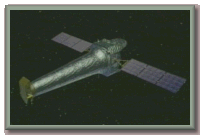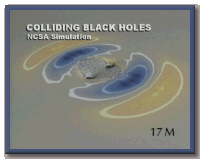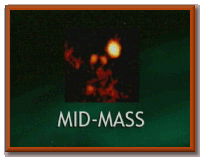|
In its first year of observation, the Chandra X-ray Telescope found evidence of a third type of black hole never known before... measuring about 500 times the mass of the Sun.
Andrea Prestwich and her colleagues looked at a region of a galaxy known as M-82." |
|
|
|
What appears to be different about these objects in M82 is that many of them are much, much, much brighter than accretion sources in our galaxy, and therefore they are probably much, much, much more massive. Andrea Prestwich Astrophysicist Harvard-Smithsonian Center for Astrophysics |
|
The Chandra astronomers think these "mid-mass" black holes may be one explanation for those supermassive black holes at the centers of galaxies.
Perhaps some black holes coalesce and then the big black hole starts to swallow material that's in its environment. It might swallow other stars, it might swallow dust, gas. You know these regions of intense star formation are very, very dense, and there's lots going on. |
|
And then these intermediate size black holes tend to drift down towards the center of the galaxy where they interact with each other, and they bang into each other, and you have collisions, and they start to coalesce and you get ten thousand solar masses, and a hundred thousand solar mass and before long you get a million solar masses and more. So that the supermassive black hole is actually something that forms over time.
Stephen Murray
Assoc. Dir., High Energy Astrophysics Div.
Harvard-Smithsonian Center for Astrophysics


